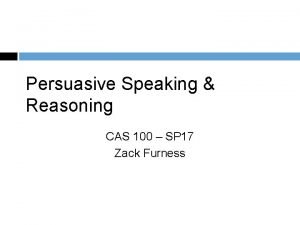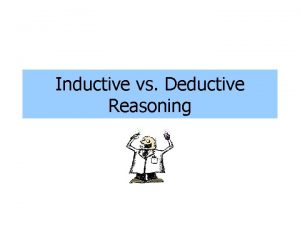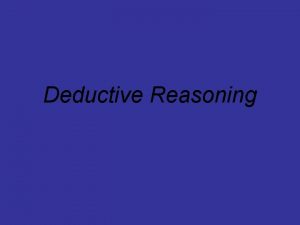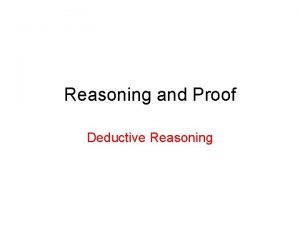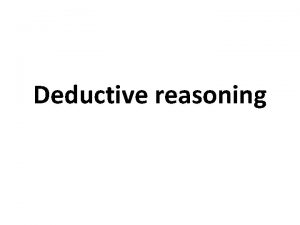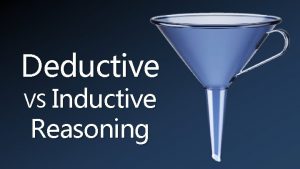Inductive Reasoning v Deductive Reasoning Inductive reasoning moves






- Slides: 6

Inductive Reasoning v. Deductive Reasoning Ø Inductive reasoning moves from specific evidence to a general conclusion. Ø Deductive reasoning moves from a conclusion to the evidence supporting that conclusion.

Inductive Reasoning v. Deductive Reasoning Ø Inductive reasoning generally involves the following questions: 1. What have you observed? 2. What evidence is available? 3. What can you conclude from that evidence? 4. Is that conclusion logical?

Inductive Reasoning v. Deductive Reasoning Ø Deductive reasoning involves asking: 1. What is the conclusion? 2. What evidence supports it? 3. Is that evidence logical? Generally, if the evidence is valid, the conclusion it supports is valid as well.

Means, Motive and Opportunity Ø In U. S. criminal law, means, motive, and opportunity is a common summation of the three aspects of a crime that must be established before guilt can be determined in a criminal proceeding. Ø Means-The ability of the defendant to commit the crime. Ø Motive-The reason the defendant committed the crime. Ø Opportunity-Whether the defendant had the chance to

Using the D. O. P. E. Method to Analyze Suspects • A law enforcement tool used in murder case investigations is the D. O. P. E. method of suspect analysis. • The D. O. P. E. method requires you to ask the following questions; D=Who Desired the victim’s death? O=Who had the Opportunity to kill victim? P=Who Prospered from victim’s death? In what way? E=What Evidence supports this conclusion?

Using the D. O. P. E. Method to Analyze Suspects • You must collect and review all evidence available in the case. • Evidence may be in the form of statements made by the suspect, eye witnesses, or other individuals who have knowledge about the case. • You should engage in Legal Reasoning to identify what information, if any, is missing. • Evidence may also be used to defend or eliminate a person suspected of a crime.






